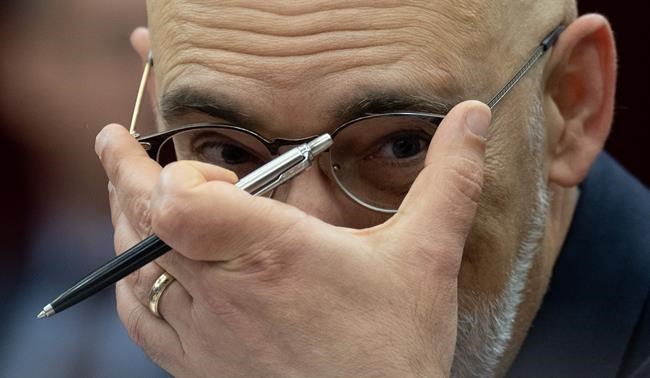OTTAWA — The parliamentary budget officer is projecting inflation will return to the Bank of Canada's two per cent target by the end of the year and the federal deficit will grow amid weakening economic conditions.
The budget watchdog's latest economic and fiscal outlook comes as the federal government gears up for its spring budget and Canadians eagerly wait for the central bank to begin lowering interest rates.
The report predicts the first rate cut to come in April, slightly earlier than financial markets expect.
The Bank of Canada is scheduled to make an interest rate announcement on Wednesday and is widely expected to hold its policy rate at five per cent.
High interest rates have weighed on the Canadian economy as consumers pull back on spending and businesses see their sales slow.
Statistics Canada reported last week that the economy eked out one per cent annualized growth in the fourth quarter. That growth was largely due to a boost in exports, supported by strong U.S. spending trends.
The PBO says the economy will likely grow by a modest 0.8 per cent this year, slightly lower than the Bank of Canada's projection of one per cent.
Meagre economic growth would weigh on government coffers, too.
The PBO anticipates the federal deficit to grow to $46.8 billion for the current fiscal year, provided no new measures are introduced and existing temporary measures expire as scheduled.
That would exceed the federal government's fall projection of $40 billion.
The report warns that if the Bank of Canada keeps interest rates higher for longer than expected, the deficit could be even larger and the economy weaker.
Finance Minister Chrystia Freeland announced on Monday that she will present the budget, which includes an update on the state of federal finances, on April 16.
The budget will likely be a challenging exercise for the Liberals.
The government is facing significant fiscal pressures that it will have to balance against the appetite for more action on housing.
The budget is also an opportunity for the Liberals to try and win back Canadians who have thrown their support behind the Conservatives.
The finance minister recently reiterated her commitment to new fiscal guardrails introduced in the fall that would limit deficits.
"For our government, it is very, very important to invest in Canada and Canadians ... and to do so in a fiscally responsible way," Freeland told reporters ahead of the introduction of pharmacare legislation last week.
"We laid out in the fall economic statement some fiscal guideposts, and we will meet them."
The federal government pledged in the fall that the current fiscal year's deficit would not get any bigger than its $40-billion projection.
According to the Finance Department, the federal deficit for the current fiscal year stood at $23.6 billion by the end of December.
The government is also looking to lower the debt-to-GDP ratio in 2024-25 relative to the projection in the fall economic statement, and keep deficits below one per cent of GDP beginning in 2026-27.
This report by The Canadian Press was first published March 5, 2024.
Nojoud Al Mallees, The Canadian Press




